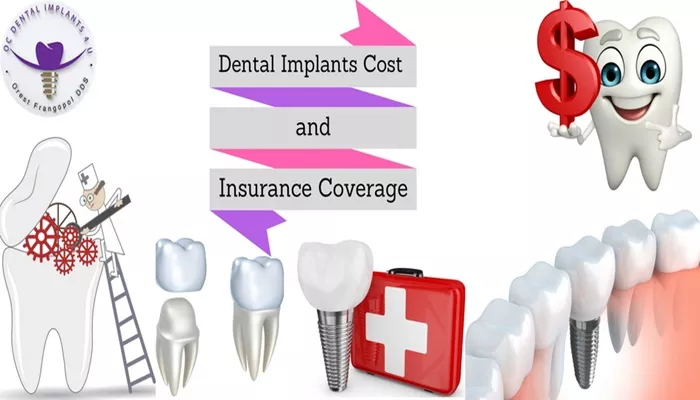Teeth extraction is a common dental procedure that may be necessary due to various reasons such as severe tooth decay, gum disease, or impacted wisdom teeth. Following an extraction, patients often wonder if it’s possible to replace the missing tooth with a dental implant. This article aims to provide a comprehensive and science-based answer to this question, addressing the feasibility, process, benefits, risks, and aftercare associated with dental implants after tooth extraction.
Feasibility of Dental Implants After Extraction
Dental implants are a popular and effective way to replace missing teeth, and they can indeed be placed after a tooth has been extracted. The success of dental implants largely depends on the quality and quantity of bone available at the extraction site. Ideally, dental implants should be placed in healthy bone that can support and integrate with the implant.
The Process of Dental Implants After Extraction
The process of placing a dental implant after tooth extraction typically involves several steps, including:
Extraction and Healing
The first step is to remove the tooth that needs to be extracted. This is usually done under local anesthesia to numb the area and ensure a painless procedure.
Following the extraction, the socket where the tooth was will need time to heal. This healing period is crucial for the bone to regenerate and form a stable foundation for the implant. The duration of this healing period can vary, but it is generally recommended to wait at least three to six months before placing the implant.
Bone Grafting (if necessary)
In some cases, the bone at the extraction site may not be sufficient to support an implant. In such cases, bone grafting may be necessary to build up the bone and create a suitable environment for the implant.
Bone grafting involves adding bone material (either from the patient’s own body or from a donor source) to the extraction site to promote bone growth. This additional step may extend the healing period and increase the overall cost of the procedure.
Implant Placement
Once the bone has healed sufficiently, the dental implant can be placed. This is usually done under local anesthesia, and the implant is surgically inserted into the bone.
The implant acts as a new tooth root and will fuse with the surrounding bone over time through a process called osseointegration. This process can take several months, during which the implant becomes a stable and secure foundation for the replacement tooth.
Abutment and Crown Placement
After the implant has osseointegrated with the bone, an abutment (a small connector piece) is attached to the top of the implant.
The final step is to place a custom-made crown on top of the abutment. The crown is designed to match the shape, color, and size of the patient’s natural teeth, providing a seamless and aesthetic restoration.
Benefits of Dental Implants After Extraction
Dental implants offer several benefits over other tooth replacement options, such as dentures or bridges:
Stability and Durability: Dental implants are securely anchored in the bone, providing a stable and durable restoration that can last for many years with proper care.
Improved Function: Implants allow for better chewing and biting function, as they mimic the natural feel and function of teeth.
Aesthetic Appeal: Implants can be customized to match the patient’s natural teeth, providing a seamless and natural-looking restoration.
Preservation of Bone: Unlike dentures or bridges, implants do not rely on adjacent teeth for support, preserving the health and integrity of the surrounding bone and teeth.
IV. Risks and Considerations
While dental implants are a safe and effective tooth replacement option, they do come with some risks and considerations:
Infection: As with any surgical procedure, there is a risk of infection. Proper oral hygiene and antibiotic use can help minimize this risk.
Implant Failure: In some cases, the implant may fail to osseointegrate with the bone, leading to implant failure. This may require removal of the implant and possible revision surgery.
Additional Procedures: In some cases, additional procedures such as bone grafting or sinus augmentation may be necessary to create a suitable environment for the implant.
Cost: Dental implants are generally more expensive than other tooth replacement options, such as dentures or bridges.
Aftercare and Maintenance
Proper aftercare and maintenance are crucial for the long-term success of dental implants:
Oral Hygiene: Regular brushing and flossing are essential to maintain good oral hygiene and prevent infection.
Regular Dental Check-ups: Regular visits to the dentist for check-ups and cleanings can help detect and treat any potential problems early.
Avoid Hard Foods: It’s important to avoid hard and sticky foods that could damage the implant or crown.
Smoking Cessation: Smoking is a major risk factor for implant failure. Quitting smoking can significantly improve the chances of implant success.
Conclusion
In conclusion, dental implants are a safe and effective option for replacing missing teeth after extraction. The process involves several steps, including extraction, healing, bone grafting (if necessary), implant placement, and abutment and crown placement. While dental implants offer several benefits, such as stability, durability, improved function, and aesthetic appeal, they do come with some risks and considerations. Proper aftercare and maintenance are crucial for the long-term success of dental implants. If you are considering dental implants after tooth extraction, it is important to consult with a qualified dentist who can assess your individual situation and provide personalized advice.
Related topics:

